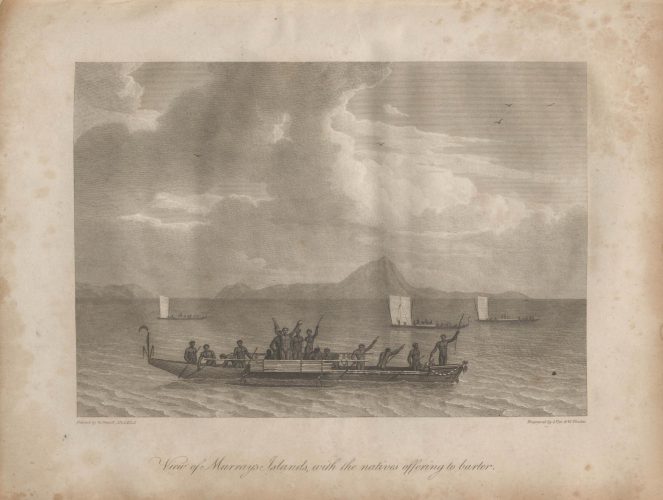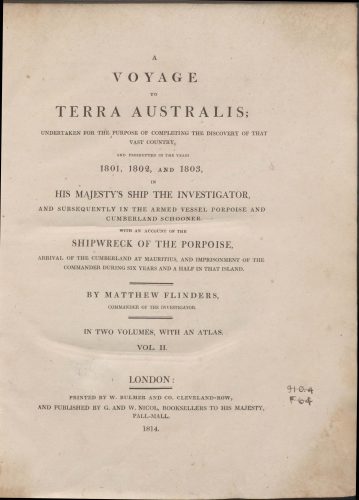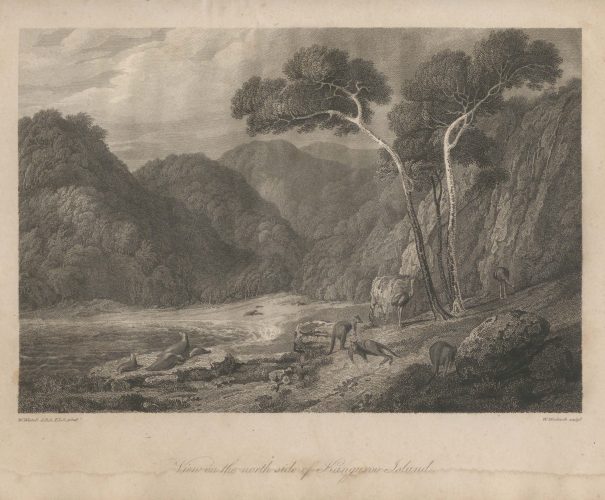Matthew Flinders: A Lost Explorer Is Found

Last year, archaeologists in England began a massive dig in preparation for the HS2 rail line, which would extend service over sixty miles between the British cities of London and Birmingham. Preliminary archaeological work on the line – controversial due to the fact that it “cut[s] an unprecedented slice through 10,000 years of British history” – has uncovered artifacts ranging from prehistoric flint tools to Victorian time capsules, as well as countless human remains, as the line will run through St. James’s Gardens in London, the site of perhaps 45,000 burial sites.

Burials at the site were largely documented, particularly for prominent individuals who were laid to rest there. Time, however, takes its toll, and exact locations were hard to pinpoint; records were often lost, and identifying markers – headstones, for example, or markings on caskets – have often long-since deteriorated or disappeared completely. This past January, however, archaeologists made the rare discovery of an identifiable body, marked by a lead breastplate on top of a casket: the remains of cartographer, explorer, and the first man to circumnavigate Australia, Matthew Flinders.
Flinders was born in England in 1774 and developed a longing to go to sea after reading Robinson Crusoe. He entered the Navy in 1789 and began a career that took him from serving under William Bligh (famed, in part, for the mutiny on his ship, the Bounty), through naval battles, and finally to captaining the H.M.S. Investigator on its historic journey around Australia from 1801-1803. Accompanying Flinders were two notable companions: an Aboriginal man named Bungaree, and Flinders’ beloved cat, Trim.
Bungaree was a man of many firsts, including being the first man to have been called an Australian and the first Australian to circumnavigate the continent on which he was born. He was “a brilliant diplomat and despite language barriers could quickly ascertain the wishes of coastal Aboriginal groups,” according to the Australian Museum. Bungaree’s skills in diplomacy led Flinders to recruit him on his historic voyage and played a vital role in the trip’s success. Though less well-known than Flinders, Bungaree is still honored in Australia today, through the naming of Bongaree settlement on Bribie Island and the commemoration of the location of his farm in 2015.

Trim the Cat is likely as well-known as Flinders. As the story goes, Trim fell overboard as a small kitten but, according to Flinders, “this was far from being a misfortune; he learned to swim and to have no dread of the water; and when a rope was thrown over to him, he took hold of it like a man and ran up it like a cat.” London’s Royal Museums Greenwich published a blog post in August 2016, providing the preceding quote and also sharing that Flinders wrote an ode to Trim, which can be read here. Sadly, Trim disappeared in Mauritania, and Flinders believed that he was captured and eaten by slaves. Trim’s story lives on, however, through the words of Flinders and through his likeness being added to a statue of Flinders in Donington, Lincolnshire, England.
After returning home from his travels, Flinders began the manuscript for what would be A Voyage to Terra Australis, which details his explorations through text, maps, and illustrations. He also included a substantial index at the end of Volume 2, which includes longitudinal charts, thorough explanations for compass errors, and botanical notes.
Flinders, however, never saw the book’s publication, as he died just one day before its release. He was laid to rest at St. James’s Gardens in London, under what is now Euston station. Yet his A Voyage to Terra Australis can be viewed in Ohio Memory, giving us all the opportunity to get to know this notable explorer and his companions.
Though the focus of this post is Flinders and his voyage, the story of the excavation in England is fascinating and well worth exploring. For more information, please read:
- Story of a Nation: HS2 archaeological dig begins in UK’s biggest excavation (The Guardian)
- HS2 Archaeology (this page includes a short video on the discovery of the body of Matthew Flinders)
- Controversial HS2 burial site dig at London Euston begins (BBC)
To learn more about Flinders and the discovery of his body, visit:
- Grave of explorer Matthew Flinders unearthed near London station (The Guardian)
- Flinders, Matthew (Australian Dictionary of Biography)
(Please note: each of these links will take you to a site outside of Ohio Memory. Many were used as reference sources in the researching of this blog post).
Thank you to Shannon Kupfer-Trausch, Digital Initiatives Librarian at theState Library of Ohio, for this week’s post!



Leave a Reply
You must be logged in to post a comment.